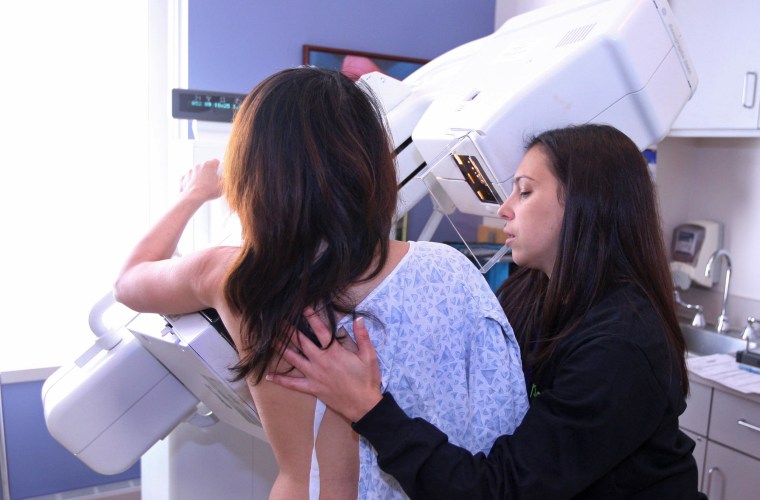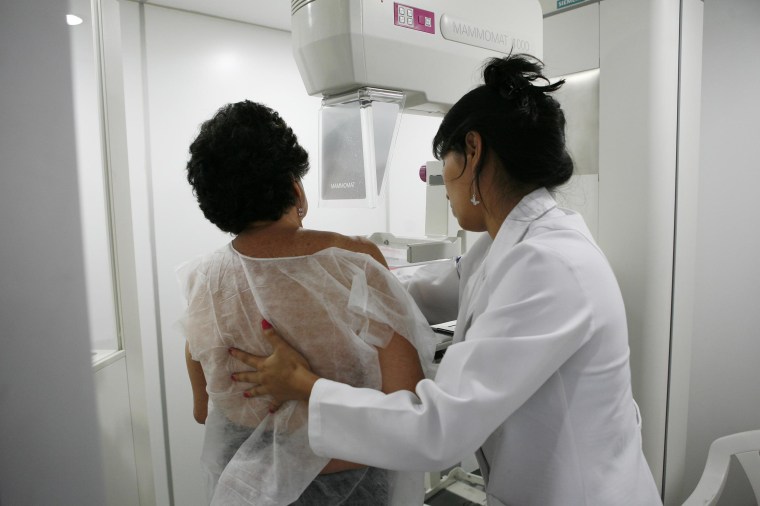A new report questioning the value of routine mammograms has generated an unusual amount of almost angry criticism from experts who say it will confuse women without adding any value to the debate.
The report finds evidence that the routine use of mammograms has found many more early stage tumors that might never have hurt women.
It suggests that widespread screening for breast cancer might lead to what’s called overdiagnosis, causing women worry at the very least, and perhaps treatment they never needed.

But other experts, including the American Cancer Society, called the report deeply flawed and urged women to get mammograms as recommended.
It’s sure to cause more discussion and debate, as it’s published in the prominent and influential New England Journal of Medicine.
The report, by Dr. Gilbert Welch of the Dartmouth Institute for Health Policy and Clinical Practice, looked at a large national survey of U.S. women’s health between 1975 and 2012.
“What we found is that since the advent of screening mammography, the women diagnosed with small tumors has increased dramatically but there has been a relatively small decline in the number of women with large tumors,” Welch told NBC News.
“That imbalance suggests widespread overdiagnosis — the detection of tumors that would otherwise never bother women during their lifetimes.”
Breast cancer death rates have fallen, but Welch and colleagues say that’s because of better drugs to treat breast cancer, not because of screening.
The bottom line, says Welch: “Screening is a choice. It’s not a public health imperative.”
Breast cancer is a leading killer of U.S. women. Every year, it's diagnosed in 200,000 women and a few men, and kills around 40,000.
“Screening is a choice. It’s not a public health imperative.”
Research shows that treating a tumor early makes for easier, less invasive surgery and can save lives. So, mammograms have become an annual ritual for millions of American women.
There's big disagreement over when and how often women should get mammograms.
American Cancer Society guidelines say women of average risk of breast cancer can wait until they're 45 to have a first mammogram and should have them every year until age 55, and then start having them every other year.
But not everyone agrees. The U.S. Preventive Services Task Force says most women can safely wait until they are 50 to start getting mammograms and that they need only one every other year.
The disagreement has generated often intense debate. It’s so heated that Congress passed legislation overriding USPSTF guidelines and requiring that insurance companies cover screening mammograms at no cost for most women who want them.
And many cancer experts were furious about Welch’s report.
“These conclusions are bold, attention-grabbing, and should be taken with a grain of salt -- actually, an entire spoonful,” the American Cancer Society’s chief cancer control officer, Dr. Richard Wender, said in a statement.
“These conclusions are bold, attention-grabbing, and should be taken with a grain of salt -- actually, an entire spoonful."
“First, the study itself is deeply rooted in a flawed methodology,” Wender added.
Another big hole: It doesn’t account for a clearly measured increase in breast cancer incidence that’s largely been blamed on the widespread use of high-dose hormone replacement therapy in the 1990s and early 2000s.
HRT has now been reformulated, and many fewer women use it, and experts have seen a drop in the number of cases of breast cancer.
Wender said careful comparison studies show that women who get mammograms as part of a regular program are 30 percent to 40 percent less likely to die of their breast cancer.
“This presents a clear bottom line: mammography screening substantially contributes to reducing breast cancer mortality. This new study does not credibly challenge that fact.”
"The recipe for health is much more what your grandmother would have told you: Go play outside, eat your fruits and vegetables, and by all means don’t start smoking. "
Dr. David Dershaw, a radiologist at Memorial Sloan-Kettering Cancer Center in New York, was even more blunt.
“This is all smoke and feathers,” he said. “Just because a pre-eminent medical journal publishes a paper doesn’t mean it’s valid,” Dershaw added.
“All his data show that breast cancer risk being found at an appropriately smaller stage and is being cured.”
Dr. Therese Bevers of the University of Texas MD Anderson cancer center says the issue isn’t so much the size of the tumors that have been found as how to best find fast-growing cancers.
““I don’t think it’s an issue to find these lesions. It’s what you do with them,” she told NBC News.
“We need to understand how to better understand the biology.”
And Dr. Joann Elmore of the University of Washington School of Medicine says overdiagnosis is a clear issue.
“My patients’ fear of breast cancer is palpable. I see them fret over whether or not to have a mammogram, worry about false positive abnormalities, and struggle to pay for diagnostic evaluations for which they are not reimbursed,” Elmore wrote in a commentary in the New England Journal of Medicine that accompanied the report.
“The mantras, ‘All cancers are life-threatening’ and ‘When in doubt, cut it out’, require revision.”
She said doctors screen to avert malpractice suits and, of course, mammograms not only get patients in for regular check, but they make money for busy clinics. And doctors feel good about doing them.
“We get credit for curing disease that never would have harmed the patient. We receive positive feedback from patients thanking us for ‘saving my life,’ alarming feedback from patients with ‘missed diagnoses’, and no feedback at all from patients whose cancer was overdiagnosed,” Elmore added.
“The mantras, ‘All cancers are life-threatening’ and ‘When in doubt, cut it out’, require revision.”
There have been studies that cast doubt cast doubt on whether mammograms actually reduce the risk of dying from breast cancer, and a 2012 study published in the New England Journal of Medicine that found that as many as a third of cancers detected through routine mammograms may not be life-threatening.
That one found that 1 million women may have been overdiagnosed, which means they were needlessly treated, not to mention emotionally distressed.
At least one study has showed that many women suffer intense anguish after they get called for a follow-up mammogram when a radiologist has spotted something suspicious.
“I worry that we’re sending a message that the best approach to health is to test oneself to health,” Welch said.
“And of course that is not the recipe for health. The recipe for health is much more what your grandmother would have told you: Go play outside, eat your fruits and vegetables, and by all means don’t start smoking. Those are the really important determinants of health and we need to emphasize those.”

